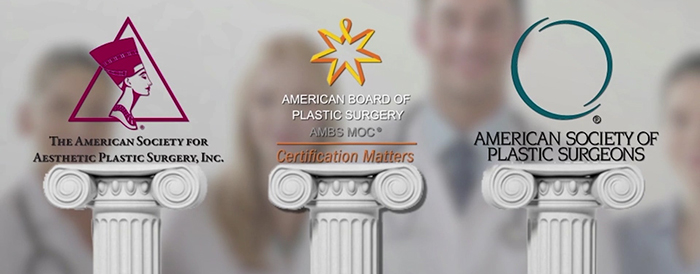Have you considered a plastic surgery procedure in the past? Did you shy away from taking the next step because you were afraid you would no longer look like yourself? You are not alone. Fear of unnatural results is a common concern for anyone who wants to enhance or improve their appearance without changing who they are.
In the past decade, a lot of attention has been paid to plastic surgery gone wrong. Thanks to television shows like Botched and the countless tabloids lining grocery store magazine aisles across the country, we’ve all seen undesirable, overdone and unnatural plastic surgery results. The good news is, we’ve all seen great plastic surgery too. Those just happen to be the results we haven’t even noticed. That’s because good plastic surgery looks so natural it can go completely undetected.
Properly performed plastic surgery will provide beautiful, natural results. The key to achieving the best possible results is careful surgeon selection. “A common fear that patients express to me is their fear of not looking natural, or looking different,” shares board certified Beverly Hills plastic surgeon Dr. John Diaz. “There really shouldn’t be a fear of that if you’re going to an experienced plastic surgeon. We know the latest advances in aesthetic ideals and techniques and apply that so that people do look natural.”
How to Verify Credentials & Experience
Before visiting a plastic surgeon, it is important to research their specialty, background, credentials and experience. While the field of plastic surgery addresses the entire body, many plastic surgeons specialize and have advanced training in very specific parts of the body. If you are considering rhinoplasty, for example, you will want to select a surgeon who is experienced and trained in rhinoplasty surgery and performs rhinoplasty on a regular basis.
Checking the surgeon’s website for photos of prior patients is a good place to begin. Many surgeons also share their CV, or Curriculum Vitae, on their website. This document is similar to a resume and outlines their education, advanced training, awards, publications in the field of plastic surgery and their plastic surgery society memberships. The CV will give you a good idea of the surgeon’s training and expertise in the field of plastic surgery.
When you are on the phone with a plastic surgeon’s office scheduling a consultation, it is also wise to ask the office staff what the surgeon’s specialty is. Next, ask how often the surgeon performs the particular procedure you are interested in having done. Verifying a plastic surgeon’s credentials is easy to do online with the American Board of Plastic Surgery’s website. You simply enter the surgeon’s last name and first name, and board certification status is displayed immediately.
What Exactly are Aesthetic Ideals?
Aesthetic ideals are a set of principles that generally dictate society’s idea or definition of beauty. These aesthetic ideals change over time. Art, culture and nature all influence what society views as aesthetic ideals. Take, for example, the women depicted in the art of the Italian Renaissance. The female form considered beautiful during that era is very different from the women who grace the covers of today’s fashion magazines.
You are most likely already aware that ideal hip-to-waist ratios exist, but did you know that there are also ideal facial proportions? Breasts, butts, chins – you name it, there is an aesthetic ideal that applies to it. Studies have even been done to establish ideal lip proportions. “Every feature of the body has been studied,” explains Dr. Diaz. “We know what things are considered proportional, beautiful and balanced. It turns out that nature really is the most beautiful designer of aesthetics, so we, as plastic surgeons, should always strive to make things look like they were the way the person was born.”
A Focus on Proportion
Plastic surgery that looks unnatural is a result of a procedure that falls outside of aesthetic ideals and the patient’s proportions. One of the things that Diaz does in order to ensure natural results is to carefully study each patient’s unique anatomical proportions. By ensuring that all of the features of a patient’s body are in harmony, he is able to deliver beautiful, natural results.
When a patient is asking for something that is out of the bounds of normal for their body’s specific proportions, he is able to educate them on why that isn’t possible. Instead, he steers them toward a result that will enhance their natural appearance and complement their anatomy. “The goal for any really good plastic surgeon is to have patients with not only beautiful results, but results that look very natural,” concludes Diaz.



















Facebook
Twitter
Instagram
YouTube
RSS